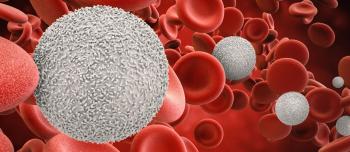In two reports published in March, the American Academy of Pediatrics (AAP) is advising clinicians to exclude potential causes of bleeding in children before deciding child abuse is the cause.
The first report, "Evaluation for Bleeding Disorders in Suspected Child Abuse," was published online on March 25, 2013, in the journal Pediatrics. The lead author of the report was James Anderst, MD, of Children's Mercy Hospital (CMH) in Kansas City. He and coauthors explain that bruising and/or bleeding in a child can raise concerns over possible child abuse. A history and clinical assessment can help determine the necessity of an evaluation for a potential bleeding disorder. Knowledge of the prevalence and known clinical symptoms of individual bleeding disorders can therefore be used to guide laboratory testing.
A separate technical report, "Evaluating for Suspected Child Abuse: Conditions that Predispose to Bleeding," was published in the same issue of Pediatrics. Shannon L. Carpenter, MD, of CMH, lead author, and her co-authors reviewed conditions that predispose children to bleeding. They stressed the importance of a balanced, thorough and thoughtful approach to evaluating children who present with bleeding and/or bruising.
"Suspicious bleeding or bruising in a child warrants careful consideration of medical and other possible causes, in addition to abuse. Inappropriate diagnosis of child abuse can lead to removal of a child from the home, prosecution of innocent people, or both," explained Carpenter and co-authors. "On the other hand, erroneously attributing child abuse to medical or accidental causes can increase the risk of future abuse."
The reports included the following recommendations for clinicians:
- A complete evaluation of a child's medical, trauma and family histories, and a thorough physical examination are the starting point for determining the cause of bruising or bleeding.
- In every case, consideration should be given to the possibility that a medical condition has caused the bruising or bleeding. The history and physical examination should guide decisions about the need for laboratory evaluations of bleeding disorders.
- When laboratory testing is indicated, initial evaluations should reflect the prevalence of a condition and the potential for specific conditions to lead to specific findings.
- Laboratory results suggestive of a bleeding disorder do not rule out abuse.
- Children with intracranial hemorrhage (ICH) often receive blood-product transfusions, and tests for bleeding disorders should be delayed until transfused clotting elements have been eliminated.
- Consult with pediatric hematologists on a regular basis to remain aware of the most current information regarding the prevalence, assessment, and signs and symptoms of bleeding disorders.
The report also included a review of some conditions that can cause bruising or bleeding that might be confused with child abuse: ICH and nonintracranial bleeding, common factor deficiencies (VII, VIII, IX) and uncommon deficiencies (II, V, combined V and VII, and X), von Willebrand disease, vitamin K deficiency, fibrinogen abnormalities, defects of endogenous fibrinolysis, congenital platelet abnormalities and vascular disorders (Ehlers-Danlos syndrome and osteogenesis imperfecta).
Source: MedPageToday.com, March 25, 2013





